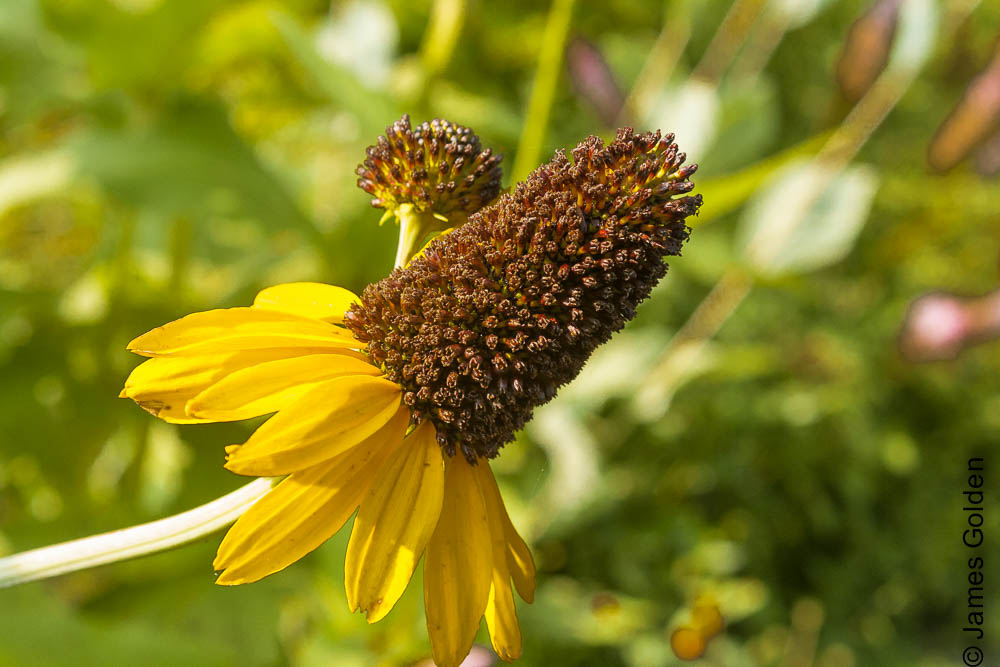Summer

Big prairie plants are dominating. By mid-July the Filipendula rubra 'Venusta' is fading as the Silphium perfoliatum and Rudbeckia maxima flower at their fullest.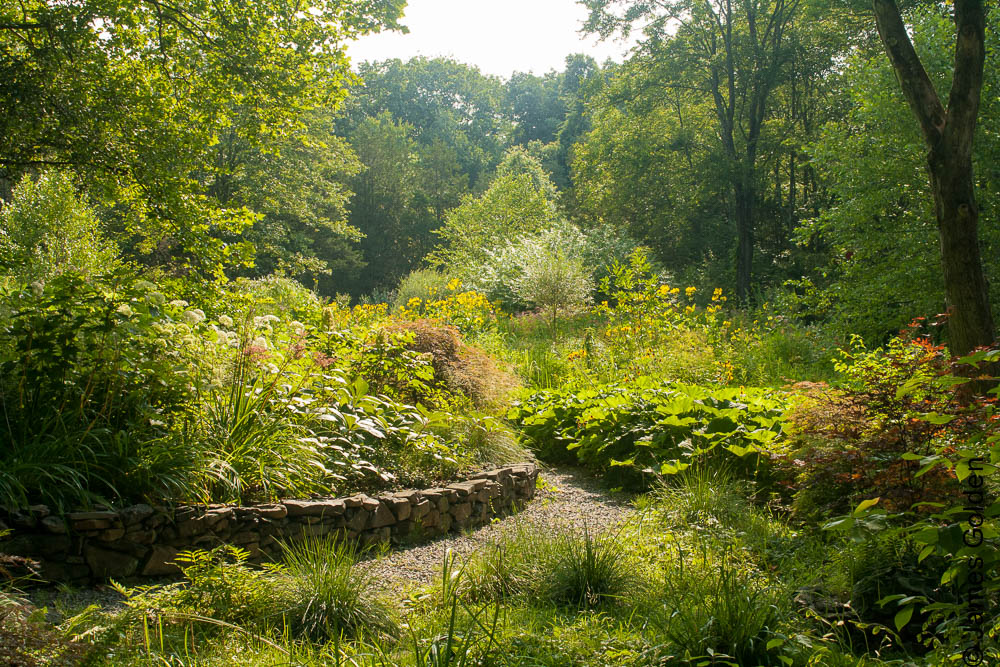 I didn't allow any yellow in my last garden, but at Federal Twist, the soil decides what I can grow, and tall yellows predominate. Nothing indicates scale below, but the Silphiums are easily ten feet tall. When you walk in the garden, you're immersed. Call it an insect's eye view.
I didn't allow any yellow in my last garden, but at Federal Twist, the soil decides what I can grow, and tall yellows predominate. Nothing indicates scale below, but the Silphiums are easily ten feet tall. When you walk in the garden, you're immersed. Call it an insect's eye view.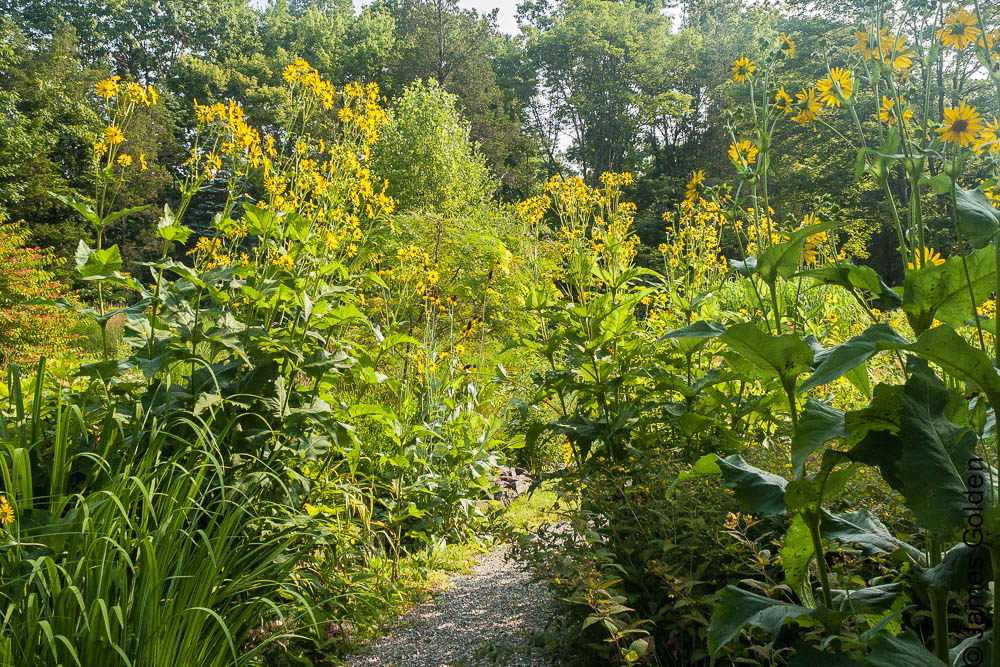 I was standing at full height when I took this photo ...
I was standing at full height when I took this photo ...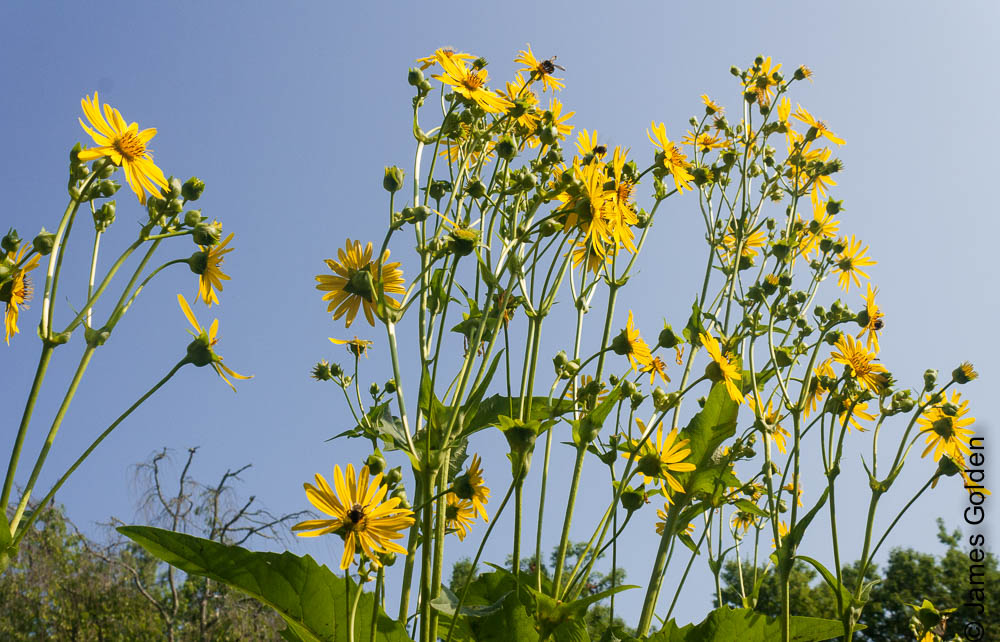 ... and here I pulled the flowers down for a close-up view.
... and here I pulled the flowers down for a close-up view.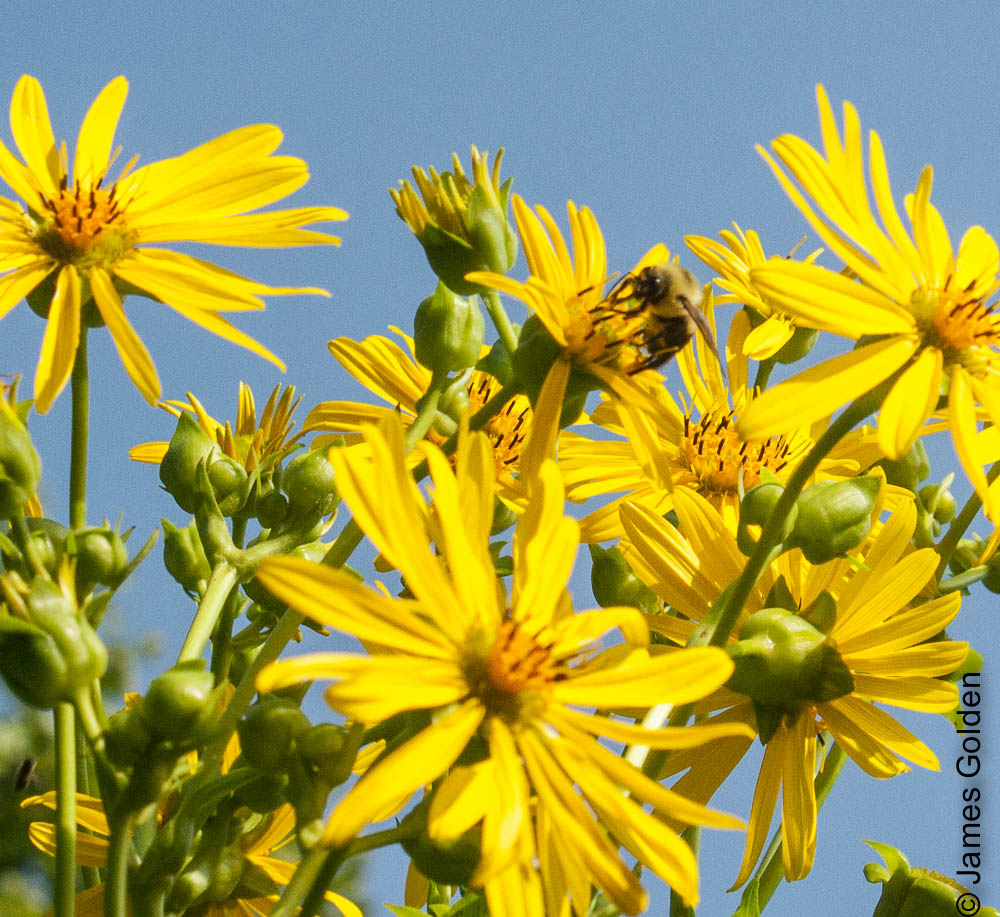 The flower of Ligularia japonica here, not Silphium.
The flower of Ligularia japonica here, not Silphium.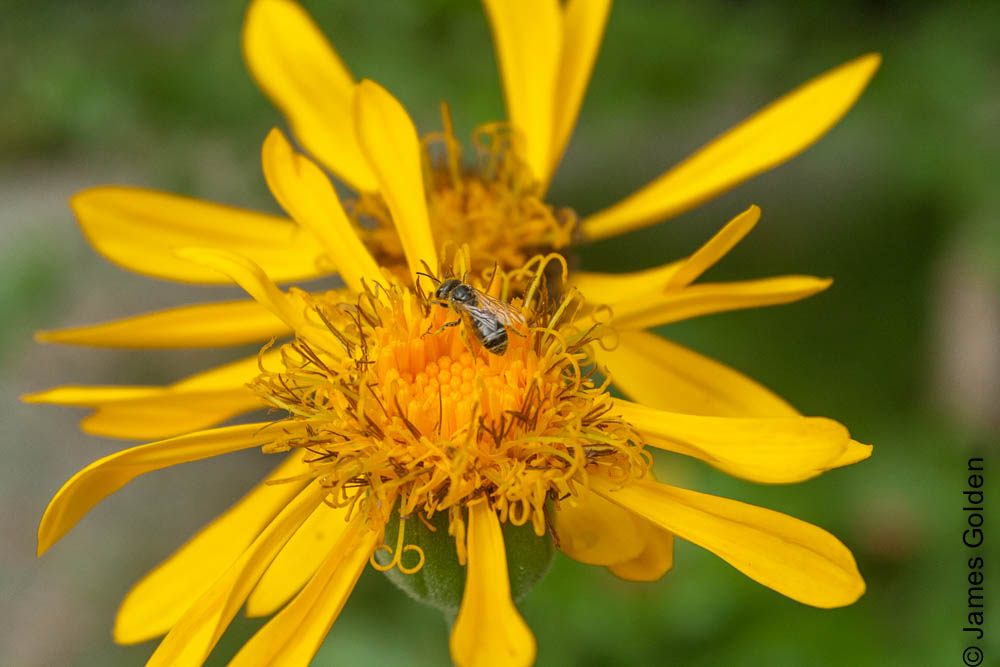 Proceeding down the path, a view of the Filipendula and below, Astilbe taquetii 'Purple Lance', one of the most stalwart and durable astilbes, and Liatris spicata. This image ...
Proceeding down the path, a view of the Filipendula and below, Astilbe taquetii 'Purple Lance', one of the most stalwart and durable astilbes, and Liatris spicata. This image ...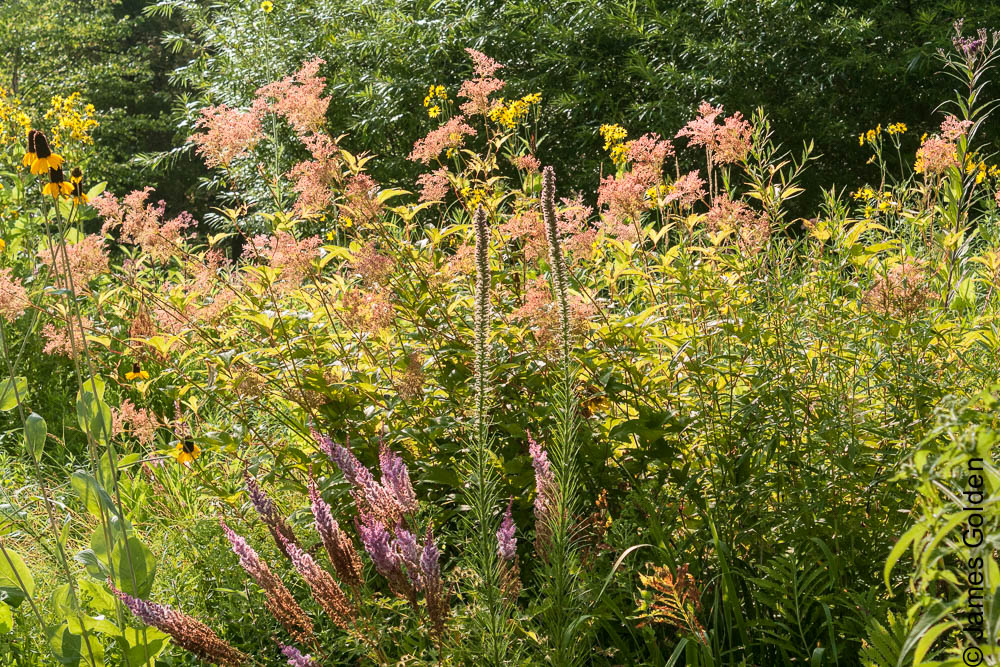 ... and the next show the complex layering I strive for in the garden.
... and the next show the complex layering I strive for in the garden.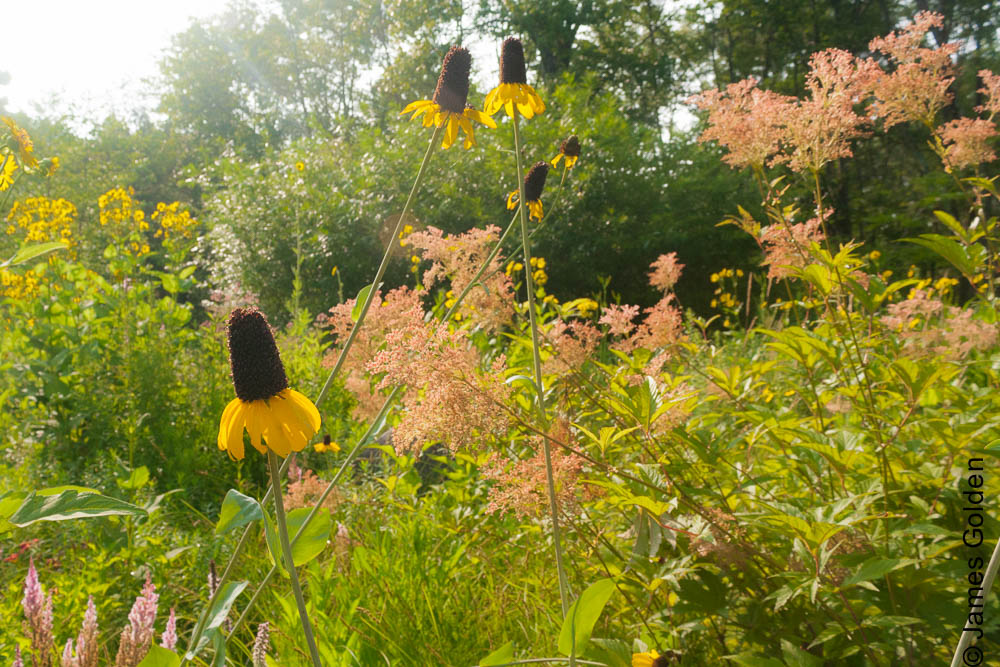 Here, a reminder that this garden is a clearing in the woods. It will always have a temporary feel. If I left, a new forest would be starting within very few years. It remains a garden only through annual burning and cutting.
Here, a reminder that this garden is a clearing in the woods. It will always have a temporary feel. If I left, a new forest would be starting within very few years. It remains a garden only through annual burning and cutting. Here we leave the North American prairie, and walk amid exotics from Asia: the extremely tall, strong as steel Inula racemosa 'Sonnenspeer' from the western Himalayas (I think), a Petasites hybrid of uncertain parentage low down, and Miscanthus from Japan. To my eye, these plants make a wonderful aesthetic complement to the Northeastern American woodland.
Here we leave the North American prairie, and walk amid exotics from Asia: the extremely tall, strong as steel Inula racemosa 'Sonnenspeer' from the western Himalayas (I think), a Petasites hybrid of uncertain parentage low down, and Miscanthus from Japan. To my eye, these plants make a wonderful aesthetic complement to the Northeastern American woodland.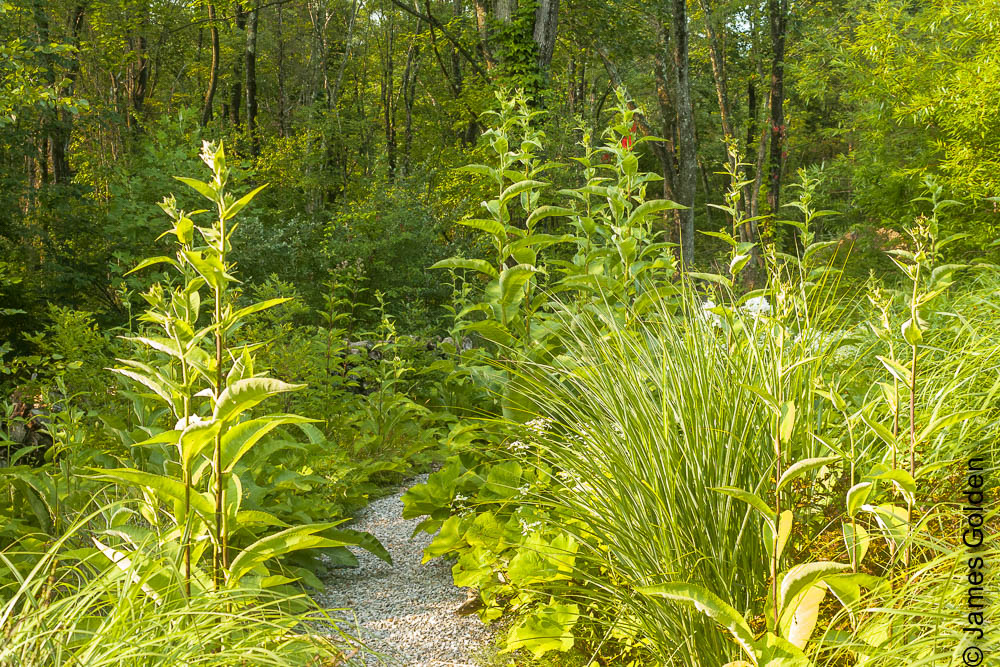 The hydrangea corner, with a bench for peaceful morning contemplation, in shade until noon. Most are Hydrangea paniculata 'Limelight', which does well in the clay and broken light ... with more Inula. I pruned the hydrangeas in spring to take them to a lower height but they've grown back tall as I am. This blocks the view back up to the house, so I may have to take them down to the ground next year.
The hydrangea corner, with a bench for peaceful morning contemplation, in shade until noon. Most are Hydrangea paniculata 'Limelight', which does well in the clay and broken light ... with more Inula. I pruned the hydrangeas in spring to take them to a lower height but they've grown back tall as I am. This blocks the view back up to the house, so I may have to take them down to the ground next year.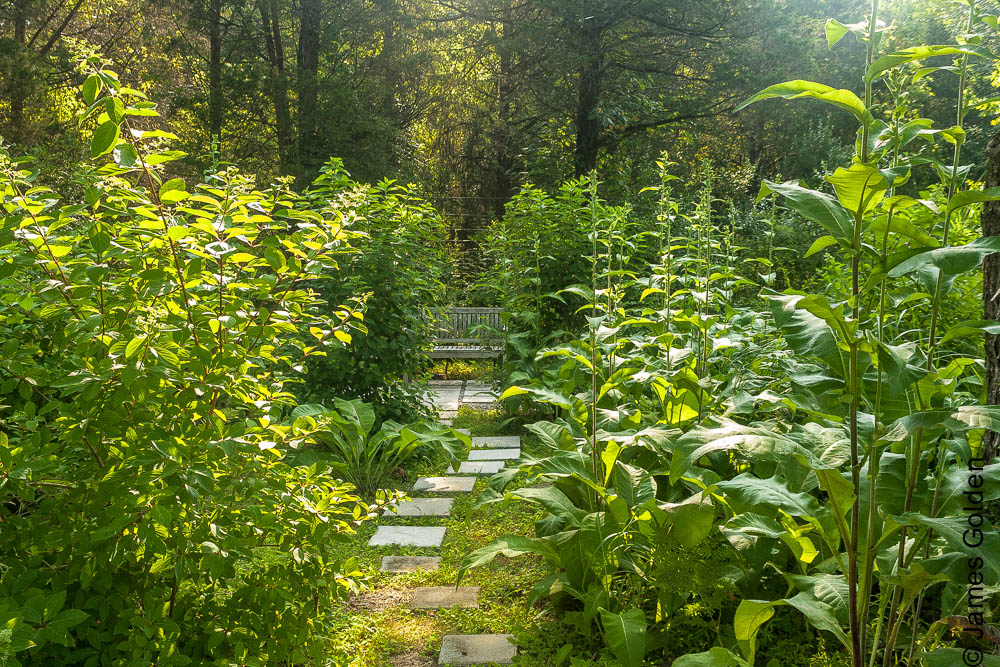 Bright daylilies and behind a self-sown Eryngium yuccafolium. I plant red and orange daylilies in the grass where they grow unobtrusively, flame out briefly like exploding stars, then fade away.
Bright daylilies and behind a self-sown Eryngium yuccafolium. I plant red and orange daylilies in the grass where they grow unobtrusively, flame out briefly like exploding stars, then fade away.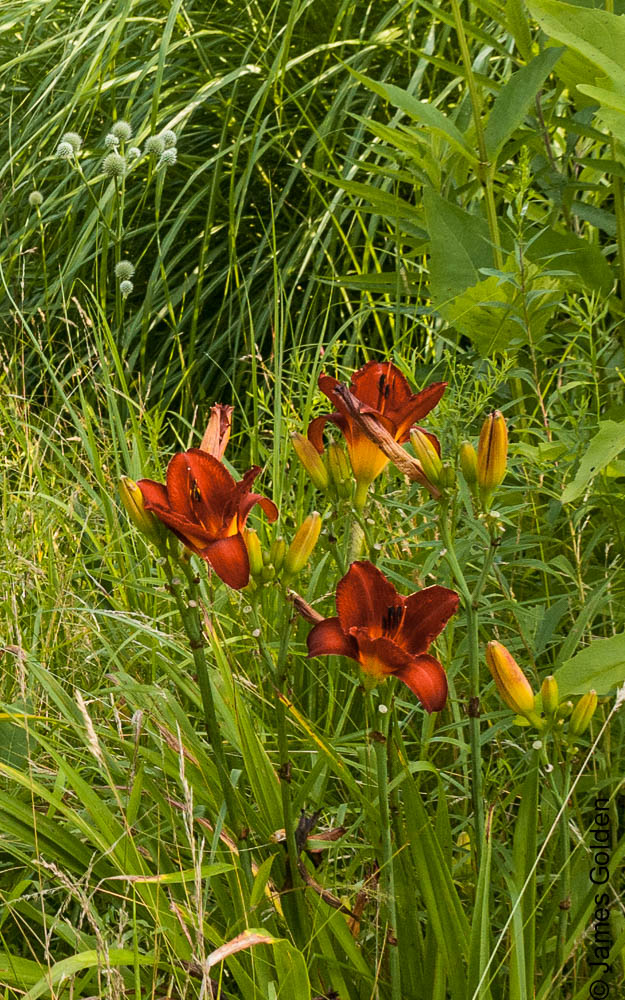 The Eryngium in close up.
The Eryngium in close up.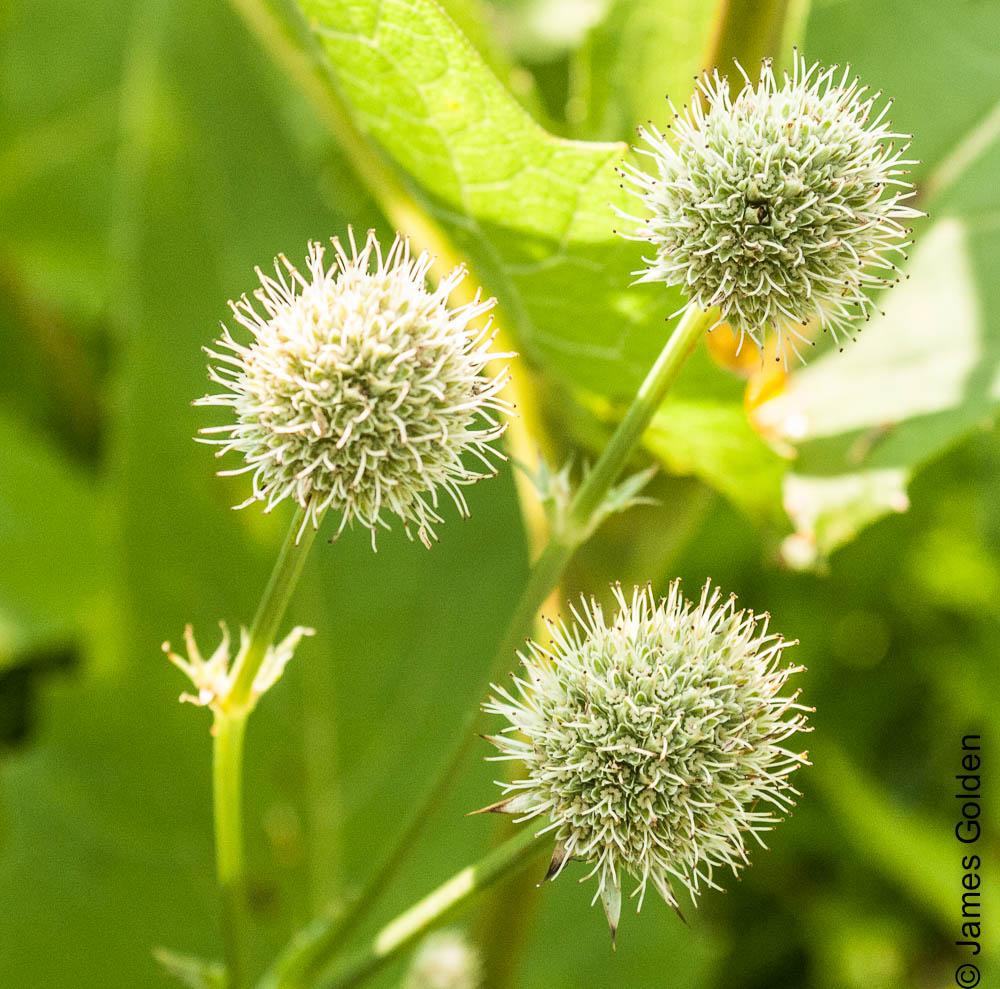 Geranium 'Rozanne' with Allium 'Millenium'.
Geranium 'Rozanne' with Allium 'Millenium'. Rudbeckia maxima, the other "star" plant at this time of summer. Behind is Joe Pye Weed just in bud, and low down is Pycnanthemum muticum, with silvery leaves to either side of the Rudbeckia. In front, some Liatris pycnostachia and miscanthus. The tree at right is river birch (Betula nigra 'Heritage') and left in the distance, Japanese fantail willow (Salix udensis 'Sekka').
Rudbeckia maxima, the other "star" plant at this time of summer. Behind is Joe Pye Weed just in bud, and low down is Pycnanthemum muticum, with silvery leaves to either side of the Rudbeckia. In front, some Liatris pycnostachia and miscanthus. The tree at right is river birch (Betula nigra 'Heritage') and left in the distance, Japanese fantail willow (Salix udensis 'Sekka').
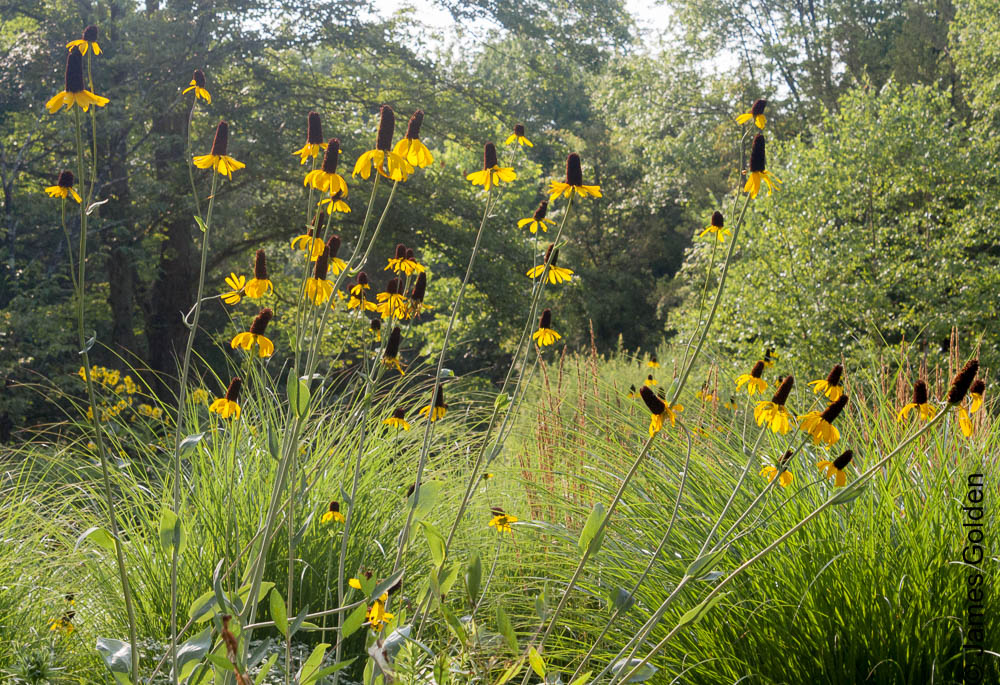 Seedheads, a feast for the birds, and for the eyes through the long winter.
Seedheads, a feast for the birds, and for the eyes through the long winter.